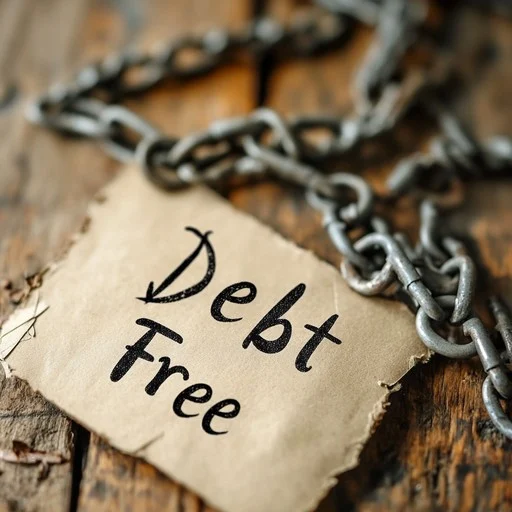Debt can feel like a heavy burden, but with the right strategy, you can regain control of your finances. In 2025, more Kenyans are looking for effective ways to tackle debt, especially with rising living costs and economic challenges. If you’re looking for actionable tips on how to pay off debt fast in 2025, this guide will walk you through two proven methods: the Debt Snowball and Debt Avalanche. Both approaches have helped thousands of people worldwide eliminate debt efficiently, and they can help you too get out of debt quickly.
Why Paying Off Debt Matters
Carrying debt affects your financial health, mental well-being, and future goals. High-interest rates can make it harder to save or invest, while constant payments limit your monthly budget. Eliminating debt allows you to:
- Save on interest payments.
- Increase disposable income.
- Achieve financial goals like starting a business or investing.
- Reduce stress and gain peace of mind.
If you’re ready to take control of your finances, understanding these two methods is crucial.
What Is the Debt Snowball Method?
The debt snowball method focuses on paying off your smallest debts first. Here’s how it works:
- List all your debts: Arrange them from smallest to largest, ignoring interest rates.
- Pay minimums on all debts: Ensure you stay current on all payments.
- Focus on the smallest debt: Direct any extra money towards the smallest debt until it’s fully paid.
- Repeat the process: Once the smallest debt is cleared, move to the next smallest.
Example
Suppose you have the following debts:
- KES 10,000 (mobile loan)
- KES 50,000 (Sacco loan)
- KES 200,000 (car loan)
Using the snowball method, you’d first clear the KES 10,000 debt, then the KES 50,000, and finally the KES 200,000. Each time you pay off a debt, free up cash to tackle the next one.
Benefits:
- Motivational: Small wins keep you energized as you eliminate smaller debts quickly.
- Simple to execute.
Drawback:
- May cost more in interest if larger debts have high rates
What Is the Debt Avalanche Method?
The debt avalanche method prioritizes debts with the highest interest rates. Here’s the process:
- List your debts by interest rate: Start with the debt that has the highest interest.
- Pay minimums on all debts: Maintain current payments to avoid penalties.
- Focus on high-interest debt: Put extra funds towards the debt with the highest interest.
- Move to the next debt: Once the high-interest debt is paid, focus on the next one.
Example
Using the same debts:
- KES 10,000 (15% interest)
- KES 50,000 (12% interest)
- KES 200,000 (20% interest)
With the avalanche method, you’d start with the KES 200,000 debt, followed by the KES 10,000, and finish with the KES 50,000.
Benefits:
- Saves you more money in the long term by reducing interest payments.
- Reduces overall repayment time.
Drawback:
- Progress may feel slow at the start, which can be demotivating.
Debt Snowball vs. Debt Avalanche: Which One Should You Choose?
Both methods are effective, so choose the one that aligns with your personality and financial goals.
Choose the Debt Snowball Method if:
- You need quick wins to stay motivated.
- Your debts have similar interest rates.
Choose the Debt Avalanche Method if:
- You want to save the most money on interest.
- You can stay disciplined without immediate progress.

Steps to Pay Off Debt Fast in Kenya in 2025
- List All Your Debts
- Create a comprehensive list of all your debts, including credit cards, Sacco loans, mobile loans (e.g., M-Shwari, Tala, Branch), and other personal loans.
- Include the balance, minimum payment, and interest rate for each debt.
- Choose Your Repayment Method
- Decide whether you’ll use the Snowball or Avalanche method.
- For Snowball: Arrange debts from smallest to largest balance.
- For Avalanche: Arrange debts from highest to lowest interest rate.
- Budget for Debt Repayment
- Assess your income and expenses to identify how much money you can allocate toward debt repayment each month.
- Cut Unnecessary Expenses
- Reduce spending on non-essentials such as eating out, subscriptions, or luxury items.
- Redirect these savings toward your debt payments.
- Increase Your Income
- Look for side hustles or part-time jobs to boost your earnings. Popular options in Kenya include offering services such as writing, virtual assistance, graphic design, photography and videography, or engaging in agribusiness and small business.
- Use this extra income for debt repayment.
- Make Extra Payments
- Pay more than the minimum amount whenever possible to accelerate debt reduction.
- Channel bonuses, overtime, or any tips and allowances toward your debt.
- Avoid Taking New Debt
- Resist the temptation to borrow more while you’re repaying existing debts.
- Rely on cash or debit cards instead of credit cards or mobile loans unless absolutely necessary.
- Track Your Progress
- Regularly review your repayment progress to stay motivated.
- Celebrate small wins, such as paying off a loan, to keep your morale high.
How to Stay Motivated
- Visualize Your Progress: Use a debt payoff chart or app to understand your repayment progress to ensure you meet your goals.
- Reward Yourself: Treat yourself to a small, budget-friendly reward after clearing each debt.
- Join Support Groups: Engage with like-minded individuals in online forums or local community groups focused on debt repayment.
Paying off debt fast in Kenya in 2025 requires discipline, focus, and the right strategy. Whether you choose the Debt Snowball or Debt Avalanche method, consistency and discipline are key. Start by listing all your debts, creating a plan, taking action and tracking your progress, and look forward to a debt-free future. Remember, the sooner you eliminate your debt, the faster you can work toward achieving financial freedom.
Image courtesy: Unsplash.com
Discover more from The Finlite Journal
Subscribe to get the latest posts sent to your email.


2 Responses
Fantastic job covering this topic in such depth! I can’t wait to implement some of these ideas. Great read! Looking forward to more posts like this. I appreciate the detailed information shared here. I can’t wait to implement some of these ideas.
I’m glad you found the information about debt management strategies helpful.
Regularly visit this blog for more practical personal finance tips